Miscellaneous
Here is a collection of various pictures that don't fit into a separate album. Mostly there are some experiments.
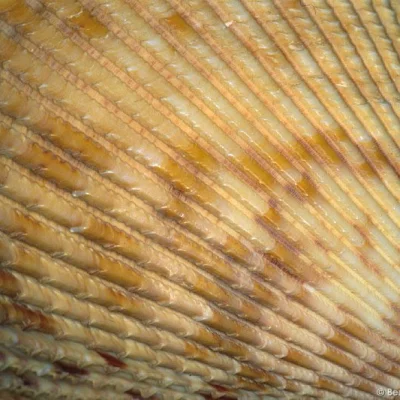 Fig. 1: Close-up of a heart shell — Minolta X-700, November 2001
Fig. 1: Close-up of a heart shell — Minolta X-700, November 2001
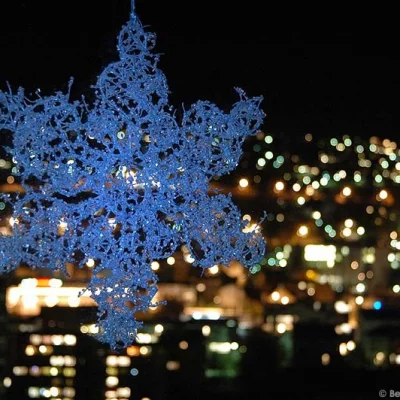 Fig. 2: A christmas star on the living room window in Chur. The star was illuminated with a blue LED while taking the picture. — Nikon D70, 4s at ISO 800, white balance tungsten, 10 December 2004
Fig. 2: A christmas star on the living room window in Chur. The star was illuminated with a blue LED while taking the picture. — Nikon D70, 4s at ISO 800, white balance tungsten, 10 December 2004
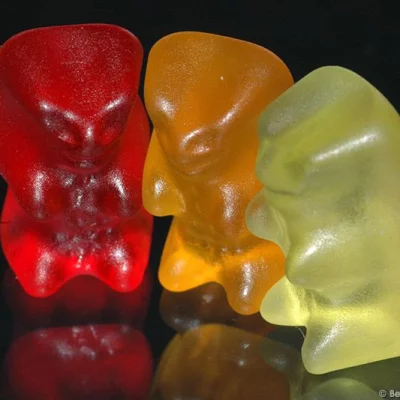 Fig. 3: Three gummy bears — Nikon D70, AF Micro Nikkor 2.8/105mm, f/22, 2 April 2005
Fig. 3: Three gummy bears — Nikon D70, AF Micro Nikkor 2.8/105mm, f/22, 2 April 2005
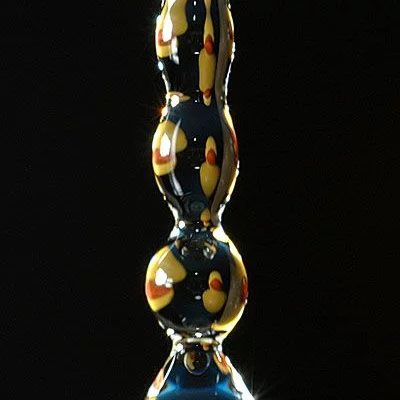 Fig. 4: Quack quack quack ... A rubber duck in water drops — Nikon D70, AF Micro Nikkor 2.8/105mm, 1/500s, f/22, flash SB-800 from left, 13 April 2005
Fig. 4: Quack quack quack ... A rubber duck in water drops — Nikon D70, AF Micro Nikkor 2.8/105mm, 1/500s, f/22, flash SB-800 from left, 13 April 2005
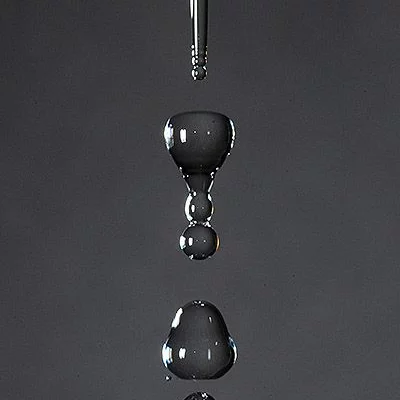 Fig. 5: Water drops from a tap in my bathroom. I put a black paper in the back and flashed from the left side. — Nikon D70, AF Micro Nikkor 2.8/105mm
Fig. 5: Water drops from a tap in my bathroom. I put a black paper in the back and flashed from the left side. — Nikon D70, AF Micro Nikkor 2.8/105mm
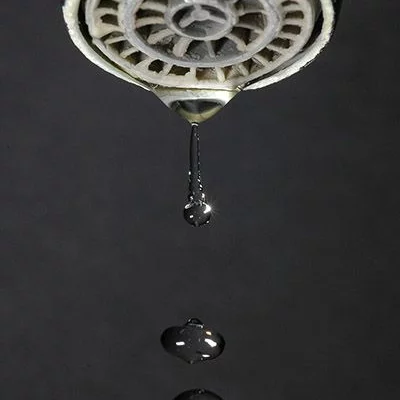 Fig. 6: Water drops from a tap in my bathroom. I put a black paper in the back and flashed from the left side. — Nikon D70, AF Micro Nikkor 2.8/105mm
Fig. 6: Water drops from a tap in my bathroom. I put a black paper in the back and flashed from the left side. — Nikon D70, AF Micro Nikkor 2.8/105mm
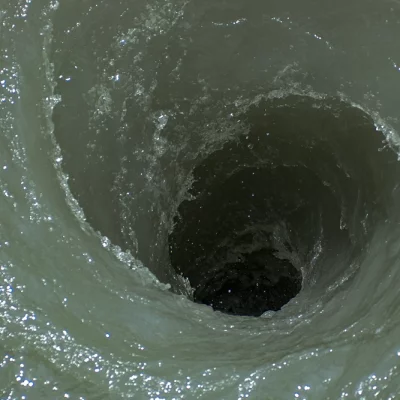 Fig. 7: If you get into this whirl you will never come out alive. Take at the hydroelectic power plant at Ems. — EXIF: Nikon D70; Δt=1/1600 s; f=70 mm; f/2.8; ISO 200; 2005-06-05 13:19:18
Fig. 7: If you get into this whirl you will never come out alive. Take at the hydroelectic power plant at Ems. — EXIF: Nikon D70; Δt=1/1600 s; f=70 mm; f/2.8; ISO 200; 2005-06-05 13:19:18
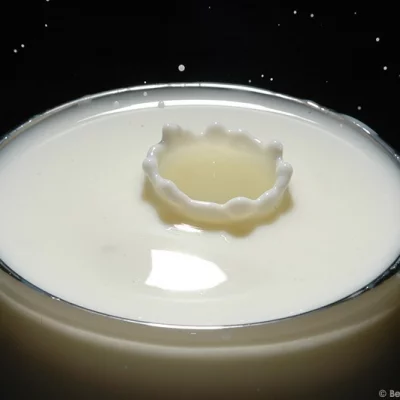 Fig. 8: Milk drops into a glass of milk — Nikon D70, AF Micro Nikkor 105mm 1:2.8, 1/500s, f/32, ISO 200, flash SB800, 13 September 2005
Fig. 8: Milk drops into a glass of milk — Nikon D70, AF Micro Nikkor 105mm 1:2.8, 1/500s, f/32, ISO 200, flash SB800, 13 September 2005
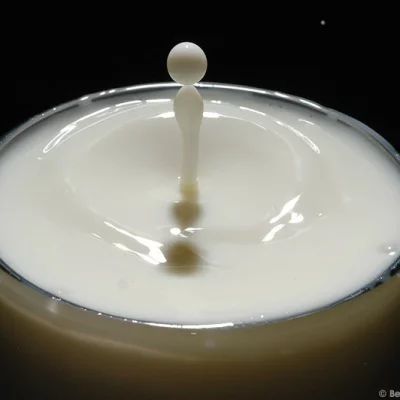 Fig. 9: Milk drops into a glass of milk — Nikon D70, AF Micro Nikkor 105mm 1:2.8, 1/500s, f/32, ISO 200, flash SB800, 13 September 2005
Fig. 9: Milk drops into a glass of milk — Nikon D70, AF Micro Nikkor 105mm 1:2.8, 1/500s, f/32, ISO 200, flash SB800, 13 September 2005
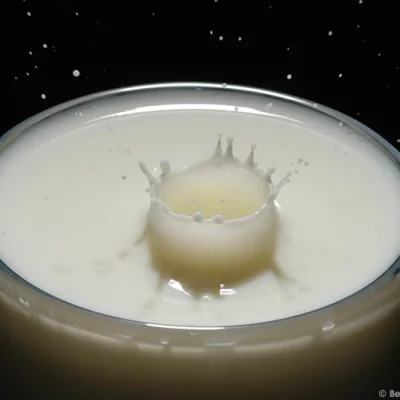 Fig. 10: Milk drops into a glass of milk — Nikon D70, AF Micro Nikkor 105mm 1:2.8, 1/500s, f/32, ISO 200, flash SB800, 13 September 2005
Fig. 10: Milk drops into a glass of milk — Nikon D70, AF Micro Nikkor 105mm 1:2.8, 1/500s, f/32, ISO 200, flash SB800, 13 September 2005
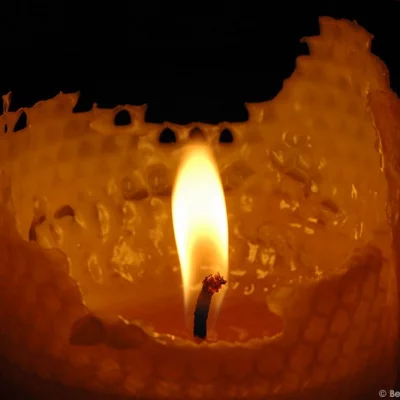 Fig. 11: A burning bee wax candle — Nikon D70, AF Micro Nikkor 105mm 1:2.8, December 2005
Fig. 11: A burning bee wax candle — Nikon D70, AF Micro Nikkor 105mm 1:2.8, December 2005
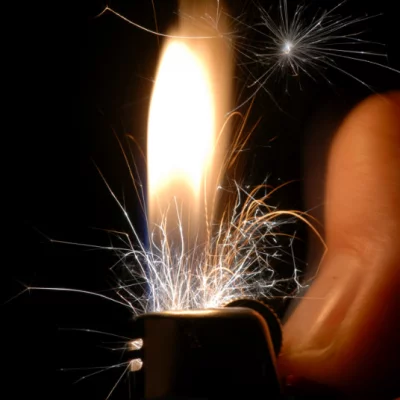 Fig. 12: A new year's eve fireworks for poor people — Nikon D200, Nikkor Micro AF-S VR 105mm 1:2.8, ISO 100, 1s, f/16, 4 January 2007 — EXIF: Nikon D200; Δt=1 s; f=105 mm; f/16.0; ISO 100; 2007-01-04 22:05:12
Fig. 12: A new year's eve fireworks for poor people — Nikon D200, Nikkor Micro AF-S VR 105mm 1:2.8, ISO 100, 1s, f/16, 4 January 2007 — EXIF: Nikon D200; Δt=1 s; f=105 mm; f/16.0; ISO 100; 2007-01-04 22:05:12
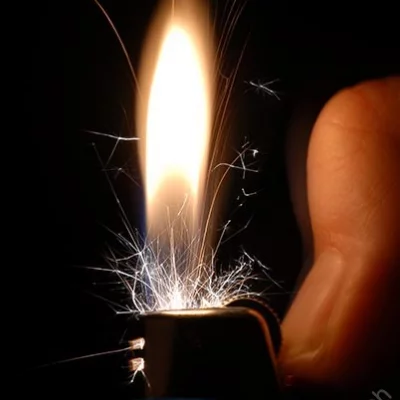 Fig. 13: A new year's eve fireworks for poor people — Nikon D200, Nikkor Micro AF-S VR 105mm 1:2.8, ISO 100, 1s, f/16, 4 January 2007
Fig. 13: A new year's eve fireworks for poor people — Nikon D200, Nikkor Micro AF-S VR 105mm 1:2.8, ISO 100, 1s, f/16, 4 January 2007
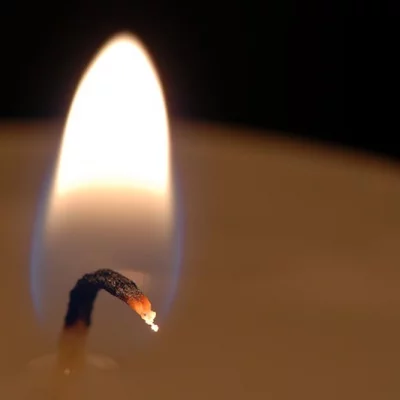 Fig. 14: Flame of a candle light. — Nikon D200, Nikkor Micro AF-S VR 105mm 1:2.8, ISO 100, 1s, f/16, 4 January 2007
Fig. 14: Flame of a candle light. — Nikon D200, Nikkor Micro AF-S VR 105mm 1:2.8, ISO 100, 1s, f/16, 4 January 2007
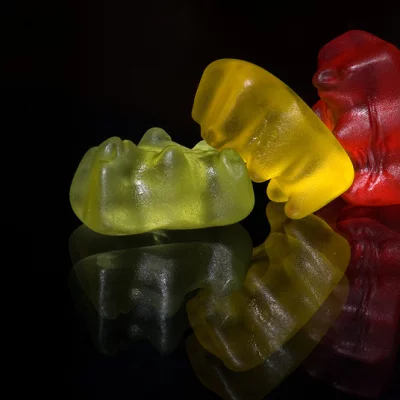 Fig. 15: A gummi bear threesome — Nikon D200, Nikkor Micro AF-S VR 105mm 1:2.8, 4 June 2007 — EXIF: Nikon D200; Δt=1/250 s; f=105 mm; f/22.0; ISO 100; 2007-06-04 17:35:05
Fig. 15: A gummi bear threesome — Nikon D200, Nikkor Micro AF-S VR 105mm 1:2.8, 4 June 2007 — EXIF: Nikon D200; Δt=1/250 s; f=105 mm; f/22.0; ISO 100; 2007-06-04 17:35:05
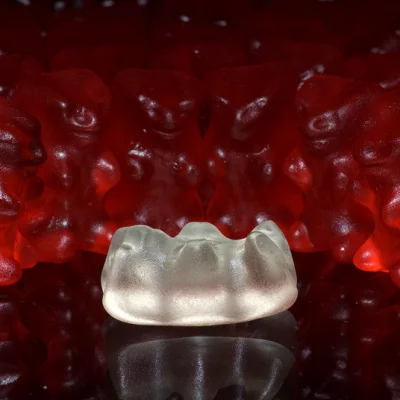 Fig. 16: A pale dead gummi bear with red gazers — Nikon D200, Nikkor Micro AF-S VR 105mm 1:2.8, 4 June 2007 — EXIF: Nikon D200; Δt=1/250 s; f=105 mm; f/22.0; ISO 100; 2007-06-04 17:44:15
Fig. 16: A pale dead gummi bear with red gazers — Nikon D200, Nikkor Micro AF-S VR 105mm 1:2.8, 4 June 2007 — EXIF: Nikon D200; Δt=1/250 s; f=105 mm; f/22.0; ISO 100; 2007-06-04 17:44:15
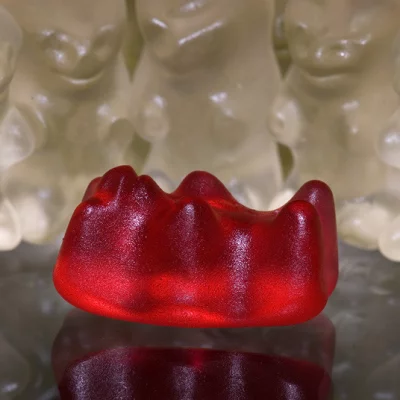 Fig. 17: An injured bloody gummi bear with pale audience. — Nikon D200, Nikkor Micro AF-S VR 105mm 1:2.8, 4 June 2007 — EXIF: Nikon D200; Δt=1/250 s; f=105 mm; f/22.0; ISO 100; 2007-06-04 17:49:32
Fig. 17: An injured bloody gummi bear with pale audience. — Nikon D200, Nikkor Micro AF-S VR 105mm 1:2.8, 4 June 2007 — EXIF: Nikon D200; Δt=1/250 s; f=105 mm; f/22.0; ISO 100; 2007-06-04 17:49:32
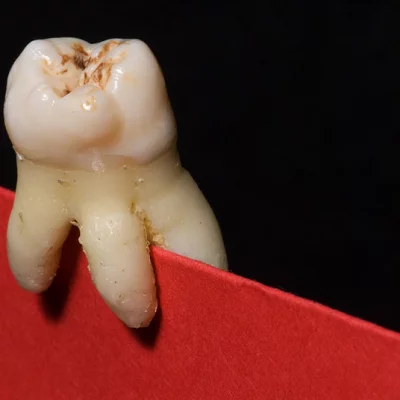 Fig. 18: A quarter of my wisdom that I've lost (ouch) in November 2007 and just found today. — Nikon D200, Nikkor Micro AF-S VR 105mm 1:2.8, 5. March 2008 — EXIF: Nikon D200; Δt=1/250 s; f=105 mm; f/32.0; ISO 200; 2008-03-05 21:07:25
Fig. 18: A quarter of my wisdom that I've lost (ouch) in November 2007 and just found today. — Nikon D200, Nikkor Micro AF-S VR 105mm 1:2.8, 5. March 2008 — EXIF: Nikon D200; Δt=1/250 s; f=105 mm; f/32.0; ISO 200; 2008-03-05 21:07:25
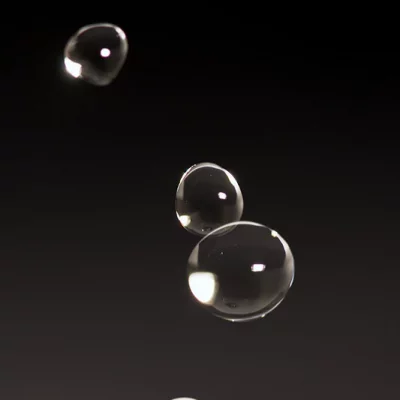 Fig. 19: Water drops floating in air, frozen by the camera flash. — Nikon D200, Nikkor Micro AF-S VR 105mm 1:2.8, Blitz SB-800, 26 July 2008 — EXIF: Nikon D200; Δt=3 s; f=105 mm; f/6.3; ISO 100; 2008-07-25 21:06:24
Fig. 19: Water drops floating in air, frozen by the camera flash. — Nikon D200, Nikkor Micro AF-S VR 105mm 1:2.8, Blitz SB-800, 26 July 2008 — EXIF: Nikon D200; Δt=3 s; f=105 mm; f/6.3; ISO 100; 2008-07-25 21:06:24
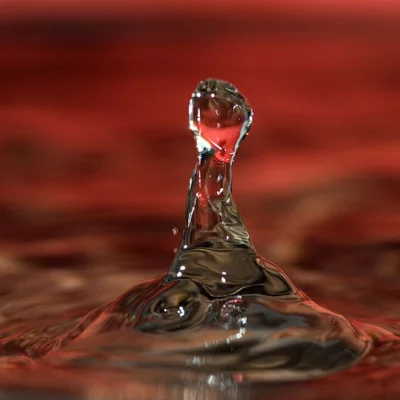 Fig. 20: Water drops after hitting the water surface. — Nikon D200, Nikkor Micro AF-S VR 105mm 1:2.8, Blitz SB-800, 26 July 2008 — EXIF: Nikon D200; Δt=1/2 s; f=105 mm; f/11.0; ISO 100; 2008-07-27 21:26:57
Fig. 20: Water drops after hitting the water surface. — Nikon D200, Nikkor Micro AF-S VR 105mm 1:2.8, Blitz SB-800, 26 July 2008 — EXIF: Nikon D200; Δt=1/2 s; f=105 mm; f/11.0; ISO 100; 2008-07-27 21:26:57
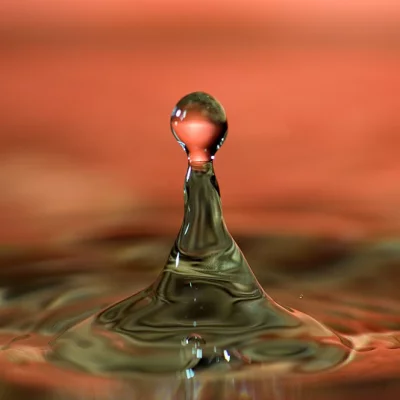 Fig. 21: Water drops after hitting the water surface. — Nikon D200, Nikkor Micro AF-S VR 105mm 1:2.8, Blitz SB-800, 26 July 2008 — EXIF: Nikon D200; Δt=1 s; f=105 mm; f/8.0; ISO 100; 2008-07-27 21:37:39
Fig. 21: Water drops after hitting the water surface. — Nikon D200, Nikkor Micro AF-S VR 105mm 1:2.8, Blitz SB-800, 26 July 2008 — EXIF: Nikon D200; Δt=1 s; f=105 mm; f/8.0; ISO 100; 2008-07-27 21:37:39
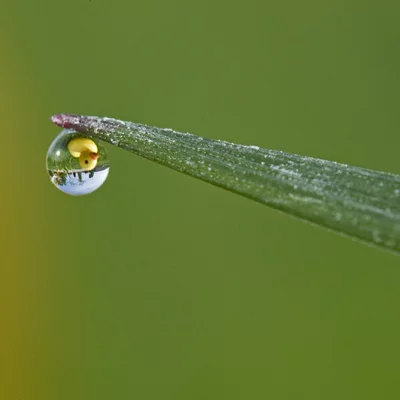 Fig. 22: A reflection of a rubber duck in a dew drop on a grass. — Nikon D3, Nikkor Micro AF-S VR 105mm 1:2.8, 2011 — EXIF: Nikon D3; Δt=1/200 s; f=210 mm; f/32.0; ISO 1600; 2011-04-08 8:47:46
Fig. 22: A reflection of a rubber duck in a dew drop on a grass. — Nikon D3, Nikkor Micro AF-S VR 105mm 1:2.8, 2011 — EXIF: Nikon D3; Δt=1/200 s; f=210 mm; f/32.0; ISO 1600; 2011-04-08 8:47:46
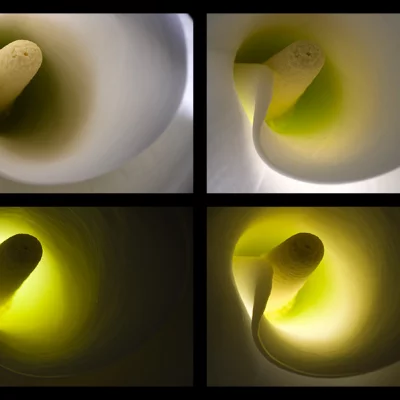 Fig. 23: Macro shot of a calla flower, four times in different light — Nikon D200, Nikkor Micro AF-S VR 105mm 1:2.8, Blitz SB-800, 26. November 2009
Fig. 23: Macro shot of a calla flower, four times in different light — Nikon D200, Nikkor Micro AF-S VR 105mm 1:2.8, Blitz SB-800, 26. November 2009
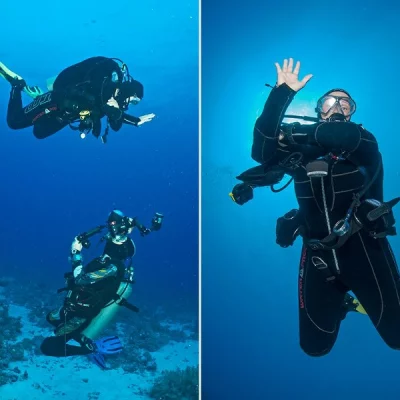 Fig. 24: Here my dive buddy made a picture of me right in the same moment as I was taking this shot. Photo on the left © Mr. P.
Fig. 24: Here my dive buddy made a picture of me right in the same moment as I was taking this shot. Photo on the left © Mr. P.
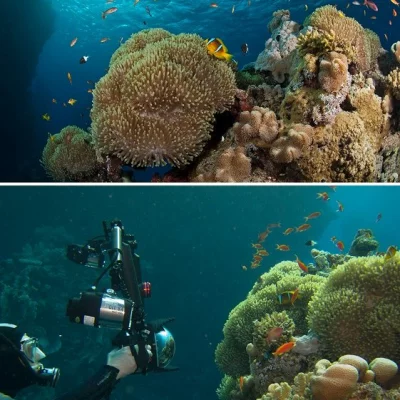 Fig. 25: This 'making of' combination could explain why on my picture on the top the corals on the right hand side are brighter than the rest of the image. My dive buddy with his optical slave strobes was right at that place when I made a picture. Or I should have reduced the intensity of my right strobe because it was closer to the corals. I don't remember.
Fig. 25: This 'making of' combination could explain why on my picture on the top the corals on the right hand side are brighter than the rest of the image. My dive buddy with his optical slave strobes was right at that place when I made a picture. Or I should have reduced the intensity of my right strobe because it was closer to the corals. I don't remember.
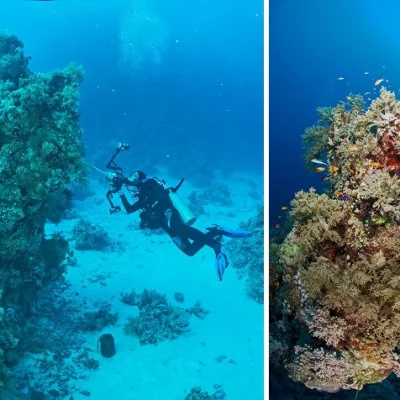 Fig. 26: Both pictures were made at the same time with different cameras and settings. The picture on the left is from my dive buddy with his compact camera, no flash and automatich exposure settings. My coral photo on the right is made with my Nikon D200 and every setting manual: shutter 1/250s, f-stop closed until the sun doesn't get too much overexposed and both strobes full on to brighte up the foreground and get the intense colour. The water gets the deepest blue if it is underexposed with about a half or one f-stop. Photo on the left © Mr. P.
Fig. 26: Both pictures were made at the same time with different cameras and settings. The picture on the left is from my dive buddy with his compact camera, no flash and automatich exposure settings. My coral photo on the right is made with my Nikon D200 and every setting manual: shutter 1/250s, f-stop closed until the sun doesn't get too much overexposed and both strobes full on to brighte up the foreground and get the intense colour. The water gets the deepest blue if it is underexposed with about a half or one f-stop. Photo on the left © Mr. P.
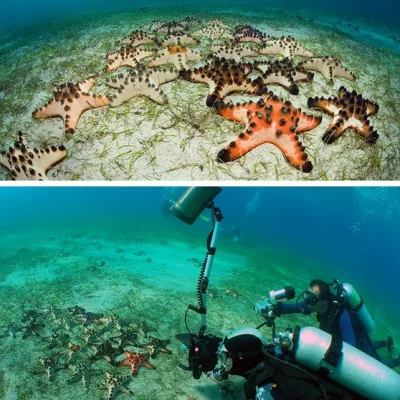 Fig. 27: In the shallow bay of Sabang in the Philippines I found a place with lots of sea stars. I gently put them to an arrangment for a picture. Unfortunately I didn't see the shadow of a boat in the background behind the beams of the sun. I could retouch the photo to remove a diver and a rope in the background but I never managed removing the ship shadow. Photo below © Mr. P.
Fig. 27: In the shallow bay of Sabang in the Philippines I found a place with lots of sea stars. I gently put them to an arrangment for a picture. Unfortunately I didn't see the shadow of a boat in the background behind the beams of the sun. I could retouch the photo to remove a diver and a rope in the background but I never managed removing the ship shadow. Photo below © Mr. P.
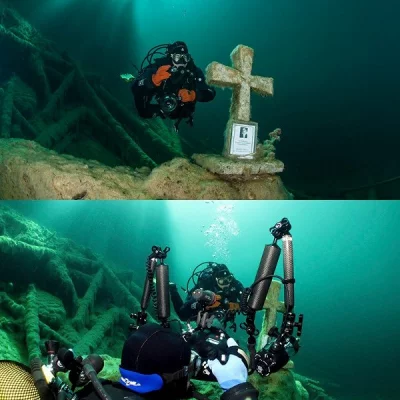 Fig. 28: My dive buddy was behind me and shot this picture in the same moment when I was taking a shot of the famous cross in Lake Samaranger. Does anyone know the story behind this cross? Photo below © Mr. P.
Fig. 28: My dive buddy was behind me and shot this picture in the same moment when I was taking a shot of the famous cross in Lake Samaranger. Does anyone know the story behind this cross? Photo below © Mr. P.
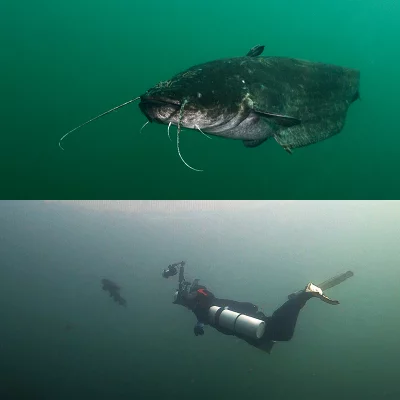 Fig. 29: My dive buddy was taking a picture of me while I was shooting the catfish in river Rhine. Unfortunately the catfish didn't want to get closer and let me take more pictures of it.
Fig. 29: My dive buddy was taking a picture of me while I was shooting the catfish in river Rhine. Unfortunately the catfish didn't want to get closer and let me take more pictures of it.
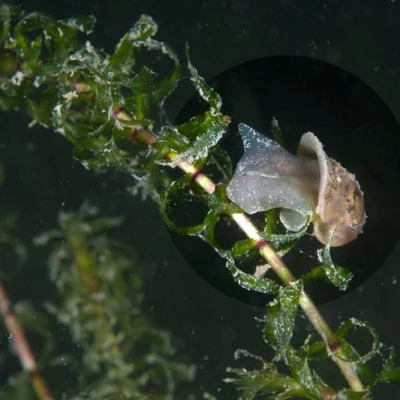 Fig. 30: A snail on a water plant in Lake Lucern. Because the visibility was bad there was a lot of backscatter. With Photoshop healing brush and clone tool I removed the spots. Afterwards I adjusted contrast and black point (circle around snail). See the processed image here.
Fig. 30: A snail on a water plant in Lake Lucern. Because the visibility was bad there was a lot of backscatter. With Photoshop healing brush and clone tool I removed the spots. Afterwards I adjusted contrast and black point (circle around snail). See the processed image here.
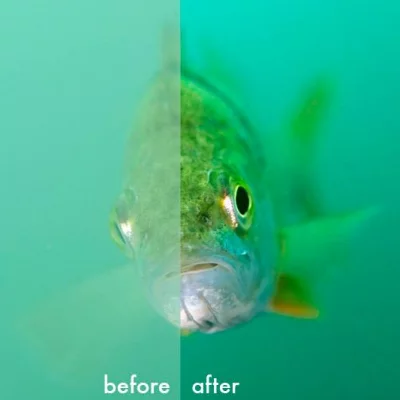 Fig. 31: A perch looked into the camera while taking this shot in bad visibility. Left original image, right with enhanced contrast and colours. I wish there was such a filter for my diving mask.
Fig. 31: A perch looked into the camera while taking this shot in bad visibility. Left original image, right with enhanced contrast and colours. I wish there was such a filter for my diving mask.
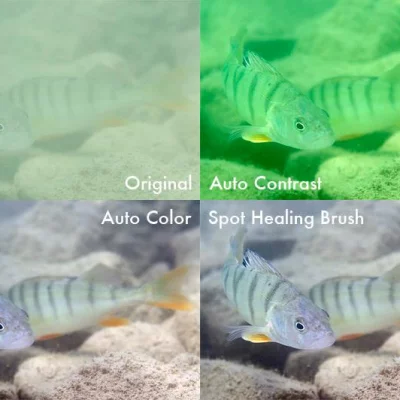 Fig. 32: Yet another series that shows how a low contrast raw image can be enhanced. With raw pictures one has 16 bit (65536) grey levels for each colour channel (red, green, blue). In JPEG there are only 256.
Fig. 32: Yet another series that shows how a low contrast raw image can be enhanced. With raw pictures one has 16 bit (65536) grey levels for each colour channel (red, green, blue). In JPEG there are only 256.
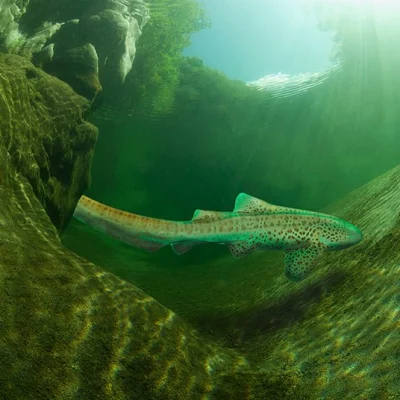 Fig. 33: A Hommingberg Gepard Trout, because someone from Fotocommunity wanted a fish there. I copied this leopard shark into that picture of Maggia.
Fig. 33: A Hommingberg Gepard Trout, because someone from Fotocommunity wanted a fish there. I copied this leopard shark into that picture of Maggia.
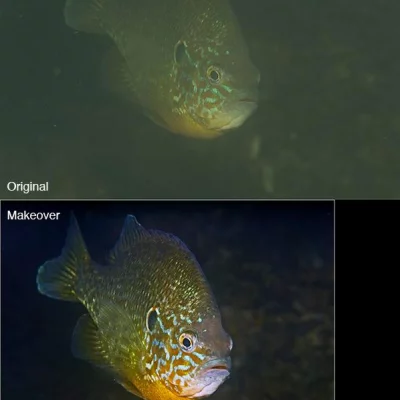 Fig. 34: During a night dive I made this shot of a sunfish in bad visibility using a 105mm macro lens and a distance of about 1m. That's why the original image has almost no colours and very little contrast. By enhancing the contrast one can recognize blue fins, which isn't probably the real colour.
Fig. 34: During a night dive I made this shot of a sunfish in bad visibility using a 105mm macro lens and a distance of about 1m. That's why the original image has almost no colours and very little contrast. By enhancing the contrast one can recognize blue fins, which isn't probably the real colour.
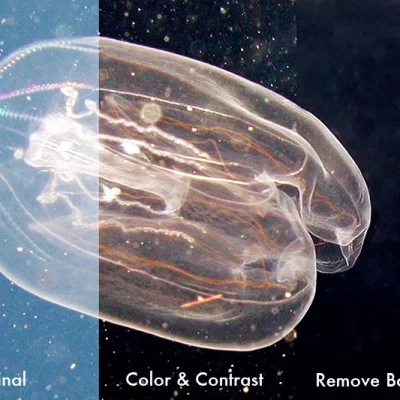 Fig. 35: How can one make a crappy picture better? With a lot of work. The original was made with a Nikon Coolpix 990 and was cropped. The resolution is about 1:1. That time I didn't shoot raw yet. Memory cards were expensive that time. And cameras were slow.
Fig. 35: How can one make a crappy picture better? With a lot of work. The original was made with a Nikon Coolpix 990 and was cropped. The resolution is about 1:1. That time I didn't shoot raw yet. Memory cards were expensive that time. And cameras were slow.
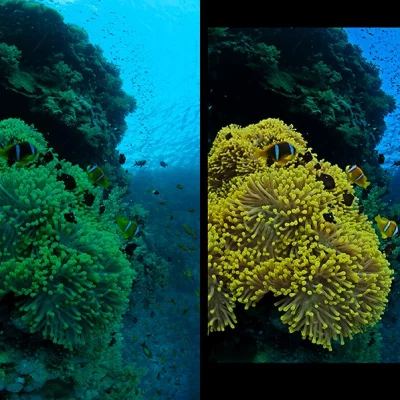 Fig. 36: On the dive safari in September 2011 in the Red Sea my TTL flash electronics got damaged due to water leaking into the underwater case. Luckily the camera and lens survived. But for the rest of the safari I couldn't use the flash anymore. On this picture I cut the anemone in the foreground, made white balance on it separately and processed the background to be darker and more blue. With a flash this image would have looked more or less like this.
Fig. 36: On the dive safari in September 2011 in the Red Sea my TTL flash electronics got damaged due to water leaking into the underwater case. Luckily the camera and lens survived. But for the rest of the safari I couldn't use the flash anymore. On this picture I cut the anemone in the foreground, made white balance on it separately and processed the background to be darker and more blue. With a flash this image would have looked more or less like this.
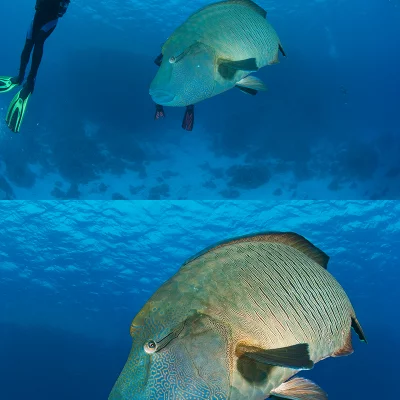 Fig. 37: Okay, this time it is real cheating. It's the first time a Napoleon gets that close to take a good picture and then a diver is right behind the fish. The picture was made right after all have jumped into water. I used Photoshop to remove the diver's fins, arm, hose and bubbles. I also enhanced colours and contrast a bit to get the pretty patterns on the fish and removed some white scars.
Fig. 37: Okay, this time it is real cheating. It's the first time a Napoleon gets that close to take a good picture and then a diver is right behind the fish. The picture was made right after all have jumped into water. I used Photoshop to remove the diver's fins, arm, hose and bubbles. I also enhanced colours and contrast a bit to get the pretty patterns on the fish and removed some white scars.
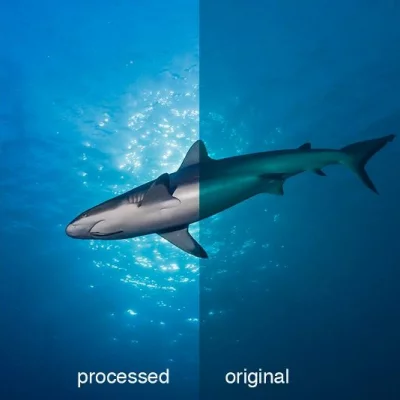 Fig. 38: On this picture the shark was too far away so that the flash wasn't strong enough to get the colours. The light has to travel the distance from strobe to fish twice. That's why the shark is cyan and not grey as it should be. With a larger f-stop the sun would have been too bright. With Photoshop camera raw I made a white balance on the shark and enhanced contrast. The colour space of raw images is much higher than non normal JPEG. This is not cheating. A digital raw image is like a classic negative where you can process the colours and contrast while developing positive paper prints.
Fig. 38: On this picture the shark was too far away so that the flash wasn't strong enough to get the colours. The light has to travel the distance from strobe to fish twice. That's why the shark is cyan and not grey as it should be. With a larger f-stop the sun would have been too bright. With Photoshop camera raw I made a white balance on the shark and enhanced contrast. The colour space of raw images is much higher than non normal JPEG. This is not cheating. A digital raw image is like a classic negative where you can process the colours and contrast while developing positive paper prints.
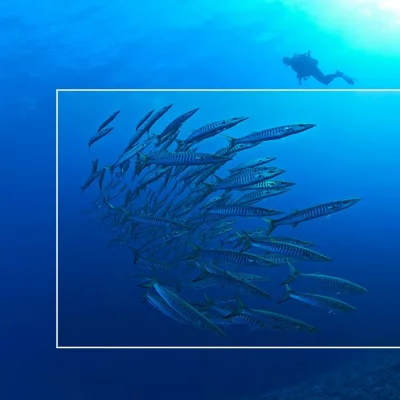 Fig. 39: At last a nice barracuda swarm but the flash did not work because the TTL electronics got damaged during an earlier dive. The image was cropped, contrast enhanced and reef ground retouched.
Fig. 39: At last a nice barracuda swarm but the flash did not work because the TTL electronics got damaged during an earlier dive. The image was cropped, contrast enhanced and reef ground retouched.
CSS(
Flex | Columns | Grid )













































































